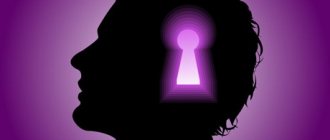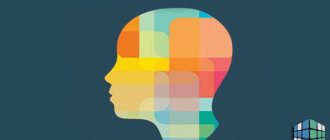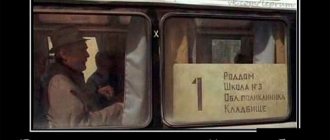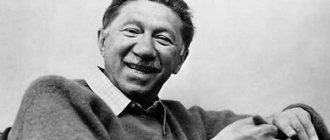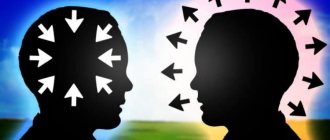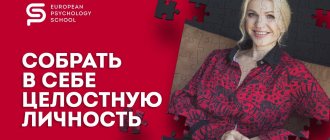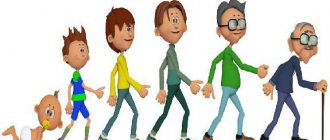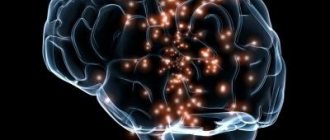«I have often seen people become neurotic because they were satisfied with insufficient or incorrect answers to the questions that life asked them. They were looking for success, position in society, a successful marriage, fame, but they remained unhappy and suffered from neuroses, even having achieved everything they had strived for. These people suffer from some kind of spiritual narrowness; their lives are usually poor and meaningless. Once they find a path to spiritual development and self-expression, neurosis usually disappears. That is why I have always attached so much importance to the very idea of personal development
", said Carl Jung.
Karl G y
becoming Jung - a Swiss psychologist, psychiatrist and philosopher, the founder of analytical psychology, the doctrine of the collective unconscious, the author of personality theory, dream theory, the associative method, personality structure, the concept of psychotypes, complexes, symbols and archetypes. Member of the Royal Society of Medicine of London, honorary member of the Swiss Academy of Sciences, honorary doctor of science from the universities of Oxford, Harvard, Calcutta, Benares and Allahabad.
Born on July 26, 1875 in the commune of Keeswil, in northeastern Switzerland. His father, Johann Jung, was a pastor of a reformist church, and his paternal grandfather and great-grandfather were doctors. Karl had a tense relationship with his father, who devoted more time to the study of classical sciences and the East. While her mother, Emily Preiswerk, often suffered from hysterical fits.
Unsociable, aloof and withdrawn, at the age of 10 he carved a 6-centimeter man from a wooden block picked up on the street. Often, climbing into the attic, he spoke to him in a secret language, when his mother’s fits and his father’s irritability brought him to the extreme of despair.
Content
- Personality structure according to K. Jung
- Archetypes
- Introverts and extroverts
- Differences between Freud's psychoanalysis and Jung's analytical psychology
Carl Jung (1875-1961) continued the development of psychoanalytic theory. He collaborated with Sigmund Freud and played a leading role in the psychoanalytic movement. But later Jung did not follow Freudian traditions, but went his own way, creating an analytical direction. Therefore, the collaboration between Freud and Jung was not so long.
Associative method
It all started with Freud's method of free association. According to Freud, you must give an association to an association that has just arisen. For example, you are bothered by a black raven outside the window (A), you should tell the psychoanalyst what pops up in your memory in connection with this image (B). Then the analyst will ask you to find an association (C) for the association that has arisen (B) and so on down the chain. As a result, you are supposed to tap into your Oedipus complex.
Jung once drew attention to the fact that people think about some words in an associative series longer than others. He thought that strong emotions cause confusion or confusion in the head, and for this reason it is more difficult to give a strong reaction. Thus was born Jung's association experiment, which is beautifully depicted in the film A Dangerous Method. In this experiment, Jung proves that the key value is the time spent building the association. Later, thought-provoking words are analyzed (usually for more than 4 seconds) and the meanings of the associations are interpreted.
How is this applied today?
Subsequently, on the basis of his associative experiment and Freudian free association, Jung created a method of amplification, when around one image (a raven in our example) many associations, images from cultural heritage, mythology, art are collected, leading the patient to an awareness of the complex behind it.
Genius and innovator. Why is Freud called a great scientist?
More details
Personality structure according to K. Jung
According to Jung, the personality structure consists of the Ego, the Personal Unconscious and the Collective Unconscious.
1. Ego is the consciousness of a person, or everything we mean when we say “I”. It consists of sensations, memories, thoughts, perceptions. The ego is responsible for self-identification, and is in fact the center of personality.
2. Below the level of consciousness is the personal unconscious. This level of the unconscious is not too deep; the events located there can be restored to consciousness with the help of some effort.
The personal unconscious is an area of the unconscious that contains formations that were previously at the level of consciousness, but were subsequently forgotten or repressed.
It consists of all the memories, sensations, fears, impulses and desires, fuzzy perceptions and other personal experiences that have been repressed or simply forgotten. The personal unconscious is constantly filled with new experiences that we either ignore or are not fully aware of.
The contents of the personal unconscious are grouped into certain thematic complexes: emotions, memories, desires, and the like. These complexes manifest themselves in the mind in the form of certain dominant ideas - the idea of strength or the idea of inferiority - and thus influence behavior. The complex appears as something like a small personality within the personality of a person as a whole.
Complexes are emotionally charged groups of thoughts, feelings and memories. Each of us has mother and father complexes - emotional impressions, thoughts and feelings associated with these figures and the scenarios of their life and interaction with us. A common power complex in our time is when a person devotes a lot of his mental energy to thoughts and feelings about control, dominance, duty, and submission. The inferiority complex is also well known.
3. Below the level of the personal unconscious lies a deeper level - the collective unconscious. The collective unconscious is the deepest level of mental activity, containing the innate experience of past generations of people, as well as animal ancestors.
The collective unconscious contains the universal evolutionary experience and forms the basis of human personality. The experience found in the collective unconscious is truly unconscious. We cannot become aware of it, or remember in any way, as this is possible with the contents of the personal unconscious.
Jung believed that the collective unconscious is the legacy of our ancestors, formed in the process of human evolution. These are hidden memories and experiences transmitted at the genetic level. Jung found direct confirmation of the existence of the collective unconscious in symbols and images repeated in the cultures of different peoples of the world. For example, in many myths there are identical descriptions of the goddess of Fertility, who is the prototype of the Mother archetype.
Basically, the collective unconscious manifests itself in images - archetypes , which are common to all humanity.
Dream theory
From the point of view of Jung's theory, the influence of dreams constantly compensates and complements the person's vision of reality in consciousness. Therefore, awareness and interpretation of dreams in the analytical process with a psychologist allows us to pay explicit attention to the unconscious in the psyche. For example, a person may become angry with his friend, but his anger quickly passes. In the dream, he may feel intense anger towards this friend. A dream preserved in memory returns a person’s consciousness to an already experienced situation in order to draw his attention to a strong feeling of anger that was suppressed for some reason.
Article on the topic
In the kingdom of Morpheus. Interesting facts about sleep and dreams One way or another, a dream is considered as a breakthrough of unconscious content into consciousness.
When a patient tells a psychoanalyst his dream, the latter can use not only the patient's associative series, but also knowledge about archetypes, hierarchy and structure of symbols. Fairy-tale and mythological scenarios also allow us to interpret dreams.
How is this applied today?
Psychoanalysts and analytical psychologists interpret dreams and this is part of their work in the same way as the initial interview, active imagination or association test. You may be asked at your first psychoanalysis session about your most important dreams or what you may have dreamed in the run-up to your first visit. For the analyst, this will be very important information, not only diagnostic, but also prognostic in nature - often the first dream in the analysis describes future work.
Archetypes
Archetypes are innate tendencies within the collective unconscious that are the internal determinants of a person's mental life.
They direct human actions in a certain direction, somewhat similar to the way our animal ancestors behaved in similar situations. Archetypes reveal themselves in consciousness in the form of emotions and some other mental phenomena. They are usually associated with such important moments of life experience as birth and death, the main stages of the life path (childhood, adolescence), as well as with the reaction to mortal danger.
Jung explored the mythology and artistic creativity of a number of ancient civilizations, identifying the underlying archetypal symbols. It turned out that there are a significant number of such symbols that are inherent in all archaic cultures, even those that were so separated in time and space that direct contact between them was obviously impossible. He also managed to discover in the dreams of patients what he considered traces of similar symbols. This further strengthened Jung's commitment to the idea of the collective unconscious.
Four such archetypes are more common than others - Persona, Anima and Animus, Shadow, Self.
1. Anime and Animus archetypes are two components of one whole. They reflect Jung's assumption that each person carries within himself certain psychological characteristics of the opposite sex.
Anima reflects female unconscious (feminine) characteristics in a male character, and animus reflects male unconscious (masculine) characteristics in a female character.
Like most other archetypes, this pair originates in the deepest, most primitive layers of human ancestral experience, when men and women internalized certain emotional and behavioral tendencies of the opposite sex. Thus, every person has feelings, emotions and experiences of both sexes.
These archetypes not only cause each sex to have traits of the opposite; they also act as collective images that motivate each gender to understand and respond to the other.
2. The Persona archetype (Mask) is the mask that each of us puts on when communicating with other people. It includes our social roles and individual style of expression.
A persona represents us as we want to be perceived by society. It may not coincide with the individual's true personality. Jung's concept of Persona is similar to the concept of role behavior in sociology, when we act as we think people expect us to act in certain situations.
A person has both positive and negative aspects. The Dominant Persona can suppress, even stifle, individuality. Those who identify with their Persona begin to see themselves only in terms of their superficial social roles or façade. C. Jung also called the Persona the archetype of conformity. At the same time, the Persona is not only negative, it protects the Ego and the soul as a whole from various social forces and attacks aimed at it.
3. The Shadow archetype is the center of the personal unconscious, a focus for material that has been repressed from consciousness; this is a kind of reverse, dark side of the Self. It is most deeply rooted in man’s animal past. Jung considered it a kind of legacy of lower forms of life.
It includes tendencies, desires, memories, experiences that are denied by the individual as incompatible with his Persona or contrary to social standards and ideals.
The shadow represents the totality of all our immoral, violent, passionate and completely unacceptable desires and actions. Jung wrote that the shadow pushes us to do something that we would never allow ourselves to do in a normal state. When something like this happens to us, we tend to explain what happened by saying that something came over us. This “something” is the shadow, the most primitive part of our nature.
However, the shadow also has its positive side. It is a source of spontaneity, creative impulse, sudden insights and deep emotions, without which a normal, full-fledged human life is also impossible.
4. Archetype Self is the center of personality around which all other systems are grouped. It holds these systems together and provides the individual with unity, balance and stability. This is the central archetype of personality integrity, which integrates the conscious and unconscious in the human psyche.
The Self is both a true subject and an integral personality, and the goal of a person’s life, which he constantly strives for, but which he rarely achieves. Before the self can be embodied, the various components of the personality must undergo full development and individuation. According to K. Jung, a person can achieve balance only as a result of a long process of psychological maturation, which he calls individualization.
Activity
Having moved to Zurich, in 1900 he entered a clinic for the mentally ill, as an assistant to the author of the term “schizophrenia” - Eugene Eugene Bleuler. Having settled in Blade territory, he soon began to publish his first clinical works, as well as articles that revealed the use of the word association test, which he himself had developed. The collected clinical material supplemented the observations made during spiritualistic seances, which made it possible to publish a book of the same name as his dissertation.
«The split personality of the spiritualist medium goes back to certain inclinations in infancy, and the presence of manic sexual desires can be traced to the basis of hallucinatory systems
“,” noted Jung.
Repeatedly referring to such works of Freud and Bleuler as “The Interpretation of Dreams” and “Studies on Hysteria,” he already then clearly defined the direction of his future work, in particular, its deviation from Freud’s position.
On February 14, 1903, Carl Jung married Emma Rauschenbach. She always showed a sincere interest in her husband's work and supported him in everything, and given her financial status, Jung could devote his time entirely to research. In 1904, his wife gave birth to his daughter Agatha.
On August 17, 1904, 18-year-old Sabina Spielrein was admitted to the clinic. The relationship between doctor and patient quickly developed into that of lovers, and their relationship became public knowledge. Jung appreciated the girl’s sharp mind and scientific way of thinking, and Spielrein could not help but fall in love with the doctor, who had a keen sense of the world. However, immediately after the illness was cured, Sabina left the clinic, and the relationship ended.
In 1906, his wife gave birth to his second daughter, Greta. In the same year, he published the book “The Psychology of Dementia Early,” which began with one of the best reviews of the theoretical literature of that time on this topic. He based his position on a synthesis of the ideas of various scientists, including Kraepelin, Janet, Bleuler and Freud. Adherents of the latter spoke about the book like this:
«...made a revolution in psychiatry
" - Jones.
«...became the cornerstone of modern interpretative psychiatry
" - Brill.
Jung also earned a reputation as the pioneer of the psychosomatic model of this disease. According to his theory, the characteristic symptoms of dementia praecox are the result of a brain-damaging toxin that is produced as a result of affect. He later abandoned this hypothesis in favor of the more modern concept of a disorder of chemical metabolism.
«...it is impossible to do without psychology when explaining the causes and nature of primary emotions that cause changes in metabolism. These emotions appear to be accompanied by chemical processes that cause specific short-term or chronic changes or damage to organs
", he wrote in 1958.
With his book, Jung drew widespread attention to the theories of Freud, "an almost unrecognized researcher
", and before finishing his book, in April 1906, he began correspondence with Sigmund himself, to whom he sent a copy of his book.
At the end of February 1907, Jung went to Vienna to meet Freud, along with his wife and freelance doctor Ludwig Binswanger. The first conversation, which he later called “ a review of horizons”
", lasted 18 hours without a break.
According to Jung, Freud " is impressive and at the same time he is 'strange' for a man of his qualifications
."
In a letter intended for Abraham, Sigmund wrote about Jung: “ Only his appearance on our stage saved psychoanalysis from becoming a national Jewish enterprise
.”
He saw in him " Jesus, destined to explore the promised land of psychiatry
", and he himself, "
like Moses, could only look at it from afar
."
A few months later, Jung founded the Freudian Society in Zurich. And the report in defense of psychoanalysis, “The Freudian Theory of Hysteria,” which he read at the first International Congress of Psychiatry and Neurology in Amsterdam, essentially turned into an apology for Freud’s ideas.
In 1908, his wife gave birth to his son Franz, and Jung organized the first International Congress on Psychoanalysis in Salzburg and founded the Yearbook of Psychoanalytic and Pathopsychological Research, which he became editor, and Freud and Bleuler co-directors.
In 1909, Jung and Freud arrived in the United States, where he gave a course of lectures. In the same year, 21-year-old Toni Wolf came to Jung as a patient, and after her recovery she became his official mistress and also his assistant. In September 1911, she even accompanied the Jung family to the Weimar Congress of the International Psychoanalytic Society. Toni accompanied him in life and work for 40 years; together they published the book “Metamorphoses and Symbols of Libido.” The wife was well aware of this affair, but her boundless love for her husband did not allow her to file for divorce.
In 1910, he resigned as director of the Burgelzli Clinic, after which Jung returned to his native land and plunged into in-depth research into myths, legends, and fairy tales in the context of their interaction with the world of psychopathology. During the Nuremberg Congress, the International Psychoanalytic Association was founded, of which he was elected president. He became the first and youngest president of the association in its history, even despite the angry protest of the Vienna group. That same year, his wife gave birth to his daughter Marianna.
The articles published during the years of defending Freud's theories no longer sparkled with the same originality, and Jung himself began to feel growing anxiety. In 1907-1910 he was visited by such Moscow psychiatrists as Mikhail Asatiani, Nikolai Osipov and Alexey Pevnitsky, all at different times. In 1911, the book “Metamorphoses and Symbols of the Libido, Part I” was published, in which he tried to apply the principles of psychoanalysis to myths, legends, fables, classical plots and poetic images, and in 1912 the second volume of the book was published. In his books, Jung deprives “libido” of sexual connotations, contrary to Freud’s ideas. In The Psychology of the Unconscious, published the same year, he refuted many of Freud's ideas.
He identified the collective unconscious, contrary to Freud’s opinion, expanded and supplemented the concept of “complex”. Jung's ideas related to philosophy, astrology, archaeology, mythology, theology, literature and psychology, and their result was analytical psychology. He also believed that everyone has “ a complete personality sketch... presented in potency from birth
“, and “
the environment does not at all give the individual the opportunity to become one, but only reveals what was already inherent in it
,” which contradicted a number of provisions of psychoanalysis.
Freud's ideas for the most part influenced him in the period before his personal meeting, but he himself did not retreat from mysticism, where the idea of the collective unconscious arose from his first work. The relationship between them soon became purely business, and in September 1913 they decided to end all communication, meeting for the last time at the International Congress in Munich, where Jung was re-elected to the International Psychoanalytic Association.
The drama of the separation turned into an opportunity for Jung to publish such works as “Symbols of Transformation” and “The Red Book.” A month later, he resigned as editor of the Yearbook of Psychoanalytic and Pathopsychological Research, and in April 1914 he left the International Psychoanalytic Association and no longer used the technique of psychoanalysis in his practice.
In July 1914, “The History of the Psychoanalytic Movement” was published, in which Freud showed the complete incompatibility of his ideas with the views of Jung and Alfred Adler. After this, the entire Zurich group left the International Association. That same year, Jung's wife gave birth to his last daughter, Helena.
In analytical psychology, Jung, in contrast to Freud, who concentrated on the dissatisfaction of sexual desires, digs deeper and wider, consistently developing and refining all the ideas created before him, including the best of Freud’s works.
In the 1920s he made a series of long trips to areas of Africa and North America. In 1921 he published the work “Psychological Types,” in which people were divided into introverts and extroverts, and the theory of archetypes was substantiated for the first time.
In 1922, after the death of his mother, he purchased a lakeside estate in Bollingham, not far from his home in Kusnacht, where he built the “Tower” for many years. Initially it was only a primitive round stone dwelling, but later it took on the appearance of a small castle, with two towers, an office, a fenced yard and a boat dock. In his autobiography, he described the construction process as “ an exploration of the structure of the psyche embodied in stone.”
" Throughout his life, he often stayed for long periods in the Tower, researching, painting and sculpting.
In 1930, Jung received the title of honorary president of the Psychotherapeutic Society of Germany and published the book “Problems of the Soul of Our Time.” In 1932 the council of Zurich awarded him a prize for literature with a check for 8,000,000 francs. In 1933 he became one of the inspirers and active participants in the International Intellectual Community "Eranos". In the same year he became a professor of psychology at the Federal Polytechnic University in Zurich.
From 1933 to 1939 he was the publisher of the Journal of Psychotherapy and Related Fields, which supported a national policy of racial purification, and the prologue to each publication invariably contained an excerpt from Mein Kampf. Later, in 1948, he mentioned in an interview with Karol Bauman that “ among his colleagues, acquaintances and patients in the period from 1933 to 1945 there were many Jews
" Jung himself claimed that this was a forced measure and was not officially convicted.
In order to study the traces of ancient civilizations, he visited the Indian Pueblo settlements located in the states of Arizona and New Mexico; at the extinct volcano Elgon, located in British East Africa; as well as in Egypt, India and Sudan. And after that I read reports at various international congresses.
He returned to teaching, giving weekly lectures at the ETH Zurich, and in 1937 he lectured on the relationship between psychology and religion at Yale University. In 1944 he became a professor at the department of medical psychology, which was specially dedicated to him at the University of Basel. He didn’t work there for long - in February he broke his leg during an excursion, and already suffered a heart attack in the hospital. The visions that visited him in those few weeks that he teetered on the brink between life and death were described in detail in his autobiography.
In April 1948, the Jung Institute was organized in Zurich, where training was conducted in English and German. Also, supporters of his method created the Society of Analytical Psychology in England, and similar ones in the USA and a number of other European countries.
In 1950, in honor of his 75th birthday, he installed a stone cube to the west of the Tower, on three sides of which he carved inscriptions. On the first - “ Here lies a stone, it is inconspicuous, its price is ridiculously low. But the wise appreciate what fools despise
" from "Rosarium philosophorum" and "
In memory of his 75th birthday, C. G. Jung gratefully made and installed, in the year 1950.
" On the second is Telesphorus, holding a lantern in his hand, around which an inscription in Greek is carved. On the third there is an inscription in Latin.
In 1955, in honor of his 80th birthday, he was elected an honorary citizen of Kusnacht, which he himself valued above election as a member of the Royal Society of Medicine in London. In November of the same year, Emma passed away, which completely devastated Jung. He immersed himself in his work, and his autobiography, recorded with the help of a secretary, took up a lot of his time. Over time, he had to hide bundles of letters behind bookshelves, because there was no time left for them.
In 1958, a congress on analytical psychology was held in Zurich - it was the first international congress, in which 120 delegates took part.
In May 1961, Jung had a new heart attack while walking, which caused blockage of blood vessels in the brain and partial paralysis of the limbs. After several weeks, during which he was again on the verge between life and death, the day before his death, he had a dream, after which he declared with a smile that he was no longer afraid of anything.
He died on June 6, 1961 at his home in Küsnacht. He was buried in the Protestant church cemetery, and the tombstone bore not only his initials, but also those of his parents, sister Gertrude and wife Emma.
Introverts and extroverts
One of Jung's greatest contributions to modern psychology is the introduction of the concepts of extraversion and introversion. He introduced the concepts of extraversion and introversion as the main types of personality orientation (ego orientation).
Extroverts are people who direct libido (vital energy) outward, to external events and other people. They easily make contact with strangers, are communicative, friendly, often very talkative and active. By interacting with others, an extrovert develops as a person, so forced loneliness is difficult for him.
People of this type are usually influenced by their environment, adapt easily to the society in which they live, and are confident in a wide range of different situations.
Introverts are people who direct their libido to the inner world. Such people are prone to contemplation and introspection. They are less susceptible to external influences, less confident in relationships with other people and the outside world, and less socially adaptable than extroverts.
A person with dominant introversion is characterized by isolation, taciturnity, and a tendency toward loneliness. An introvert draws energy from his inner spiritual sources, therefore he avoids large noisy companies.
In each person, such polar types, as a rule, coexist together, however, one of them dominates. However, the dominant type of response depends to some extent on the situation. For example, a usually introverted person may be quite socially flexible in a situation that affects his interests.
Later, Jung complements his theory of psychotypes (psychological types). He believes that all personal differences manifest themselves in four main functions: thinking, feeling, sensation and intuition, with the help of which we can navigate both the external, objective world and the internal, subjective world. Thinking and feeling belong to rational mental functions, and sensation and intuition belong to irrational ones.
Each of us has each of these functions, in addition, each function can be oriented outward or inward and can be extroverted or introverted. In total, we get 8 different mental functions. One of them is the most convenient for adaptation, therefore it is considered the leading one and determines the personality type of the same name according to Jung: thinking, feeling, sensing or intuitive (extroverted or introverted).
Heritage
Jung's legacy is now used by specialists around the world, and his followers continue to develop his methodologies. His psychology received a great response among philosophers, poets and religious leaders, and training centers for Jungian psychology freely accept students without medical education.
He divided psychologists around the world into Freudians and Jungians. The first tactic is to place the patient on the couch and listen 2-3 times a week for 50 minutes, without the possibility of rescheduling appointments to another day. While the latter accept once a week and are always ready to negotiate a more convenient time for the appointment, conduct a conversation in a convenient environment for you, use art therapy...
The concept of the collective unconscious also found a response in the ideas of modern occultism, although Jung differs from them in complexity, high culture and a fundamentally different attitude.
Differences between Freud's psychoanalysis and Jung's analytical psychology
How did Freud's views differ from Jung's? Let's highlight some differences.
1. The main differences between the analytical psychology of Carl Jung and Freudian psychoanalysis concern the question of the nature of libido . If Freud characterizes libido primarily in terms of the sexual sphere, then for Jung libido is vital energy in general, in which sexual activity is present only as one of the components and manifests itself in growth and reproduction, as well as in other activities that are most important for a particular person.
2. Also, Jung rejected the Freudian concept of the Oedipus complex . He explained the child's attachment to his mother by the purely everyday needs of the child, and the mother's ability to satisfy them.
As the child grows, he develops sexual needs that superimpose on the previously dominant needs for food. Jung suggested that libidinal energy takes on heterosexual forms only during puberty. He did not completely deny the presence of sexual forces in childhood, but he reduced sexuality to the position of only one of many drives in the psyche.
3. From Freud's point of view, a person is a product of his childhood experiences. For Jung, a person is determined not only by the past, but equally by his goals, expectations and hopes for the future. In his opinion, personality formation is not completed at the age of five. A person can change, sometimes quite significantly, throughout his life.
According to K. Jung, self-actualization can only be achieved in middle age, and therefore Jung considered this age (35-40 years) as a critical period for personal development - a boundary at which a person undergoes deep and beneficial transformations. Thus, for Jung, the most important stage of personal development is not childhood, as with Freud, but, on the contrary, adulthood, the time when he himself went through a mental crisis and was able to overcome it.
4. Another difference between Freud's and Jung's positions is that Jung attempted to penetrate deeper into the unconscious than Freud did. He added another dimension to the understanding of the unconscious: the innate experience of humanity as a species inherited from its animal ancestors (i.e., the collective unconscious).
Education
At the age of 11, Jung was sent to the Basel gymnasium. Through the efforts of his father, at that time he already knew Latin quite well and, it would seem, being already ahead of his peers, he should have studied successfully. However, he showed no interest in science, and only read ancient books or enthusiastically drew ancient castles. As he himself said, this was caused by a feeling of dual personality that did not leave him - he claimed that since childhood he had “ two selves
.”
By the age of 16, both loneliness and bouts of depression gradually began to subside. Fascinated by philosophy, Jung immersed himself in reading Pythagoras, Heraclitus, Plato, and he even found reflections of his thoughts in the works of such a German philosopher as Arthur Schopenhauer.
At the age of 18 he entered the University of Basel, the Faculty of Natural Sciences. Due to the death of his father, there was no one in his family to bring money, so in his free time from studying, he worked as a tutor, which paid for his studies and a rather modest existence.
At the same time, he became interested in the works of such mystical philosophers as Emmanuel Swedenborg and Adolf Eschenmayer, and there were even several spiritualistic seances. Oddly enough, this helped him write a dissertation on medicine, which was called: “On the psychology and pathology of so-called occult phenomena.”
He returned to this again, still for research purposes, in order to correctly formulate commentaries on such texts as the I Ching, The Secret of the Golden Flower and The Tibetan Book of the Dead.
The “Textbook of Psychiatry,” authored by Richard von Krafft-Ebing, which came before the final exams, determined the further receipt of a medical degree in psychiatry. Jung " suddenly understood the connection between psychology, or philosophy, and medical science
».
It is worth mentioning that the phrase “ Whether called or not, God is always present”
“he not only included it in his bookplate, but much later ordered it to be carved on the stone arch that was located above the front door. The Christian Church will condemn his works more than once, but he himself will remain a deeply religious person.
At the age of 21, he first met his future wife, Emma Rauschenbach, from an old German-Swiss family. Gustav immediately liked the sweet, modest girl with thick hair neatly braided into a braid.
